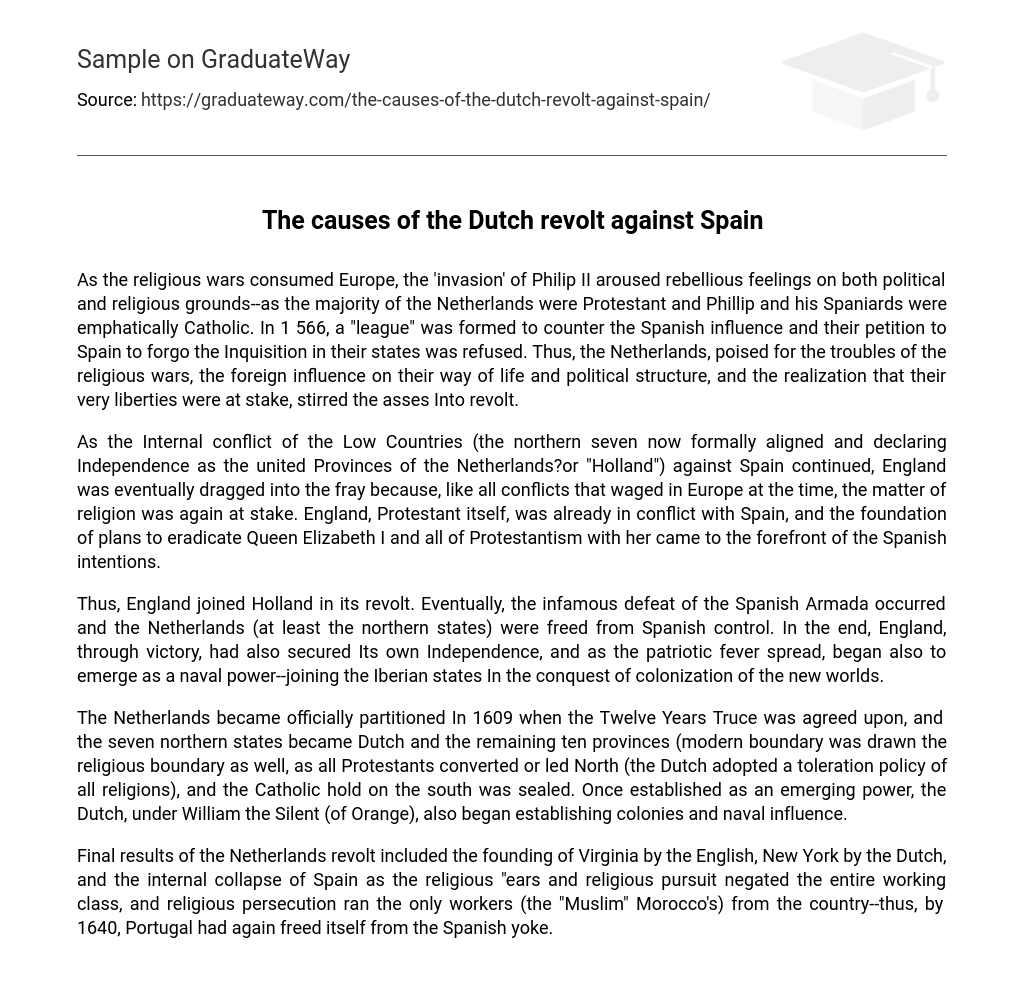As the religious wars consumed Europe, the ‘invasion’ of Philip II aroused rebellious feelings on both political and religious grounds–as the majority of the Netherlands were Protestant and Phillip and his Spaniards were emphatically Catholic. In 1 566, a “league” was formed to counter the Spanish influence and their petition to Spain to forgo the Inquisition in their states was refused. Thus, the Netherlands, poised for the troubles of the religious wars, the foreign influence on their way of life and political structure, and the realization that their very liberties were at stake, stirred the asses Into revolt.
As the Internal conflict of the Low Countries (the northern seven now formally aligned and declaring Independence as the united Provinces of the Netherlands?or “Holland”) against Spain continued, England was eventually dragged into the fray because, like all conflicts that waged in Europe at the time, the matter of religion was again at stake. England, Protestant itself, was already in conflict with Spain, and the foundation of plans to eradicate Queen Elizabeth I and all of Protestantism with her came to the forefront of the Spanish intentions.
Thus, England joined Holland in its revolt. Eventually, the infamous defeat of the Spanish Armada occurred and the Netherlands (at least the northern states) were freed from Spanish control. In the end, England, through victory, had also secured Its own Independence, and as the patriotic fever spread, began also to emerge as a naval power–joining the Iberian states In the conquest of colonization of the new worlds.
The Netherlands became officially partitioned In 1609 when the Twelve Years Truce was agreed upon, and the seven northern states became Dutch and the remaining ten provinces (modern boundary was drawn the religious boundary as well, as all Protestants converted or led North (the Dutch adopted a toleration policy of all religions), and the Catholic hold on the south was sealed. Once established as an emerging power, the Dutch, under William the Silent (of Orange), also began establishing colonies and naval influence.
Final results of the Netherlands revolt included the founding of Virginia by the English, New York by the Dutch, and the internal collapse of Spain as the religious “ears and religious pursuit negated the entire working class, and religious persecution ran the only workers (the “Muslim” Morocco’s) from the country–thus, by 1640, Portugal had again freed itself from the Spanish yoke.





